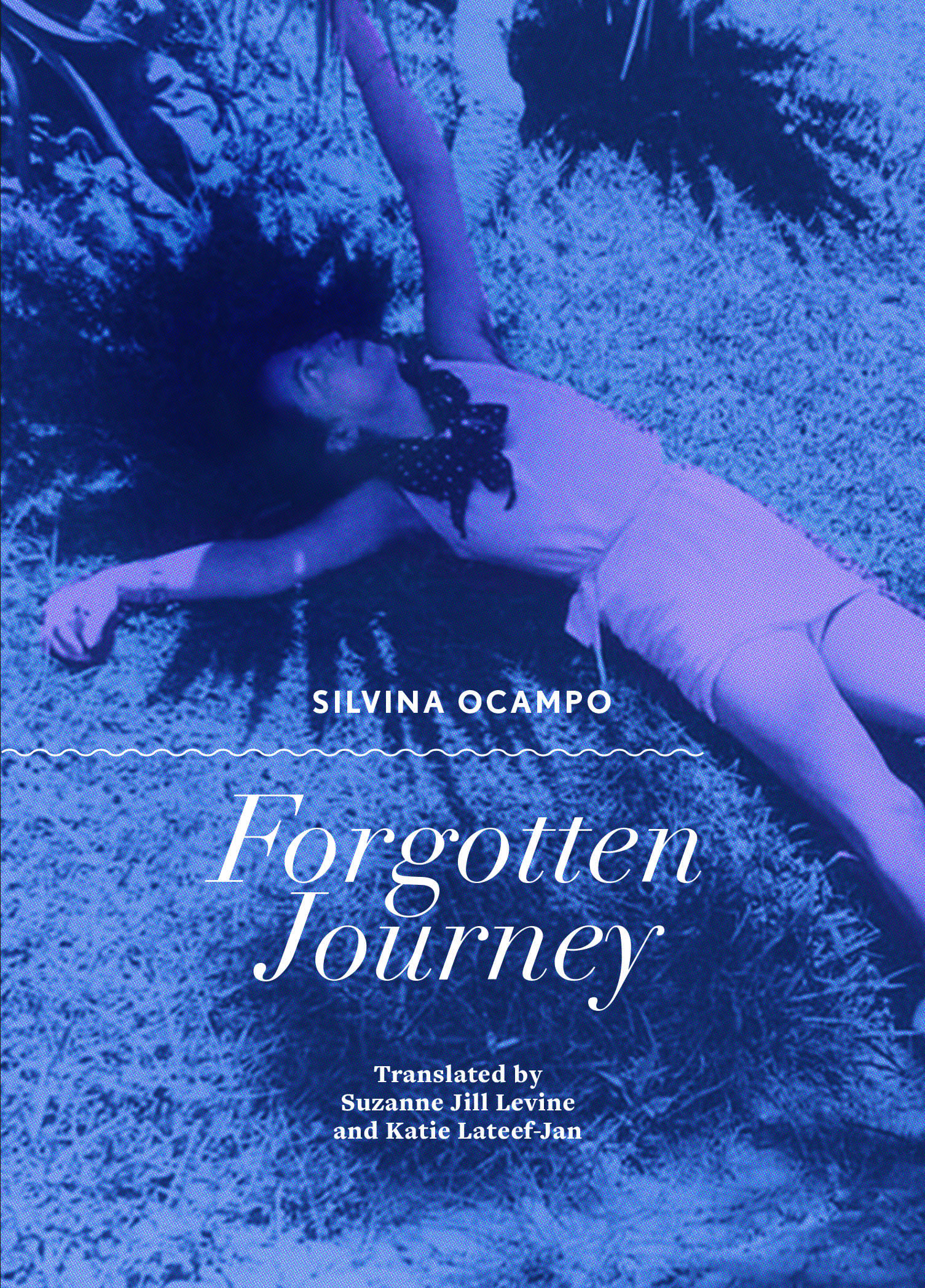The Promise and Forgotten Journey: Fiction by Silvina Ocampo
Reviews
By Mason Wray
There is a simultaneously suspicious and intriguing mystery to posthumously published work. Doubt always remains as to whether a story or poem, usually found among the author’s papers with few-to-no instructions, is anything the world was meant to see. Consider the English translation of Woes of the True Policeman, by Chilean author Roberto Bolaño. Published in 2012, almost a decade after his death, the book often seems more like an early sketch of a narrative compared with many of the other highly regarded books he published in his lifetime. Or, instead, does the story simply feature a different experimental technique from an author already celebrated for pushing boundaries? This instance seems mostly a case of the former, but the reality of course is there will rarely be a definitive answer with posthumous publications on whether a shift in perspective or abrupt narrative turn is artistic experimentation or a symptom of incompleteness.
I couldn’t help asking similar questions as I read Silvina Ocampo’s The Promise, published by City Lights and translated from Spanish by Suzanne Levine and Jessica Powell. The only book-length work of fiction known to have been written by the Argentine, the manuscript was found among her papers after she died of Alzheimer’s in 1993. Though Ocampo was a respected short story writer and poet in Argentina during her lifetime, her writerly reputation is sometimes overshadowed by stories of her close ties with towering figures of twentieth-century Argentine letters, including Jorge Luis Borges. This is even truer abroad, where few of her works have been translated. City Lights’ English translations of The Promise and Ocampo’s first short story collection, Forgotten Journey, offer an opportunity for her words to finally reach a wider international audience, particularly in the US.
Ocampo, who was born in Buenos Aires in 1903, reportedly began working on The Promise as early as the mid-1960s. At various points in subsequent decades, she hinted at its imminent completion in interviews and offered up preliminary titles that eventually went by the wayside. Still, the book’s forward makes clear that by the final years of the 1980s, as dementia began to take hold, Ocampo continued to revise and correct her manuscript.
On its surface The Promise is the story of a woman who has fallen from a ship and is cast adrift in the ocean, awaiting a rescue that never comes. But such a literal synopsis is misleading in its simplicity. It’s true the protagonist’s predicament at sea works as a metaphor for Ocampo’s own plight as she struggled with dementia, but the setup serves primarily to occasion the nostalgic musings that constitute the book. As she floats on the waves, the narrator recalls vignettes from her past in order to distract herself from the grim reality of her present. As a result the book is broken into short sections, each usually no more than a few pages, titled with the names of the people spotlighted within. Many sections are brief character sketches, and some individuals we meet only once. A small number of others—including a doctor named Leandro; his love interests, Veronica and Irene; and Irene’s daughter, Gabriela—appear again and again. And though their occasionally intertwining stories follow a somewhat chronological order as they meander through the homes, parks, and streets of a recognizable-but-unnamed Buenos Aires, it quickly becomes apparent that Ocampo is hardly interested in the notion of an overarching narrative. At one point Veronica sums up Ocampo’s own thinly veiled sentiments as she and Leandro discuss Veronica’s novel-in-progress:
“But what’s the plot about? Tell me, I’m dying of curiosity.”
“It has no plot,” answered Verónica.
“Can one write a novel without a plot?”
“Naturally, one could write forever about their feelings.”
“As long as it’s interesting or terrifying or moving.”
At its best Ocampo’s writing is all of these, embodying the sensibilities of the modernist period in which she first rose to prominence. Ocampo’s work presents a fractured, lyrical, image-driven unreality. Couples dance in a courtyard party as gypsies pass; Leandro kisses the lips of a cadaver he pretends to recognize at a crowded wake. Thus the key to appreciating Ocampo’s work is not to survey its totality, by rather to attend to its moments and to its language, especially regarding minutiae. Here, for example, is the beautifully poetic end to a section for a one-off character, Aldo Fabrici:
Why are people named after flowers and not fruits? There is nobody named Strawberry or Raspberry or Apricot, which are lovelier than Lily. What is falling in love, anyway? Letting go of disgust, of fear, letting go of everything. Flying fish remind me of butterflies in flight. What is magical about the sea is that living deep inside it no one can speak.
As the book progresses, entire sections repeat verbatim, boundaries between memories blur, and threads featuring reoccurring characters fade without much conclusion. So we are left to draw our own conclusions from the questions that linger. Are these techniques employed to mirror the protagonist’s mind as it fails with her body at sea? Is this experimental innovation? Or are these the loose ends of a manuscript edited by an author in the final years of her life, as her own mind faded, and never finished before her death? In a book that professes to lack plot, does it matter?

Purposefully or not, such doubts are assuaged by City Lights’ decision to pair its publication of The Promise with Ocampo’s story collection Forgotten Journey, translated by Katie Lateef-Jan and Suzanne Jill Levine. When the two works are side by side, it’s clear that much of what Ocampo set out to do in The Promise is not accidental or even new, but rather part and parcel of the aesthetics and techniques that define her entire career. Similarly, Forgotten Journey displays a writer who in her debut had already attained much of the mature voice and power she would wield until the end of her life. First published in 1937, Forgotten Journey includes twenty-eight short stories that are mostly no more than a few pages. Like the individual sections of The Promise, they work best when they prioritize imagistic character sketches over Ocampo’s occasionally overwrought attempts at narrative. Tales often take place in or around domestic settings, and the houses themselves, ranging from small shacks to eerily empty country estates, play integral roles. Ocampo examines class disparities alongside wealth, legacy, and gender. For example, in “The Two Houses of Olivos,” the deaths of two childhood friends, who come from markedly different social backgrounds, are juxtaposed in this way: “The birds and the streams were full of song the next morning when the two girls, riding on the white horse, reached heaven. There were no big houses or small houses, no tin or brick ones: heaven was a big blue room with fields of raspberries and other fruits.” At times in Forgotten Journey, Ocampo’s lyricism ventures into more overtly surrealist territory than in The Promise. For example, here’s how Ocampo describes the interior of a house and its occupants in the story “Florindo Flodiola”: “There were millions of silk cushions with tassels that rang like little bells each time someone entered. There was one woman much taller than the others, with a yellow tarlatan dress embellished with caramel-colored stalactites . . . They spoke with the voices of mermaids.”
The majority of Silvina Ocampo’s characters are female, and there is an accompanying feminism—subtle yet disruptive—that echoes through both Forgotten Journey and The Promise. Largely evincing a politics of acknowledgement and witness, her writing quietly reveals the double standards and ironies layered into mundane aspects of the lives of the women in her stories. At one point Veronica is asked in The Promise which male composer’s music she prefers to play on the piano: “‘Prefer,’ replied Veronica dryly. ‘I’m not allowed to prefer.’” The irony isn’t lost when considering Ocampo, whose enchantingly modern, surrealist writing has long remained internationally underread, unlike her male contemporaries’. Now, more than twenty-five years after her death, these two translations from City Lights may begin to change that.
Mason Wray is a poet and writer from Decatur, Georgia. He now lives in Oxford, Mississippi, where he is a Barry and Susan Hannah Fellow and MFA candidate at Ole Miss.
More Reviews

